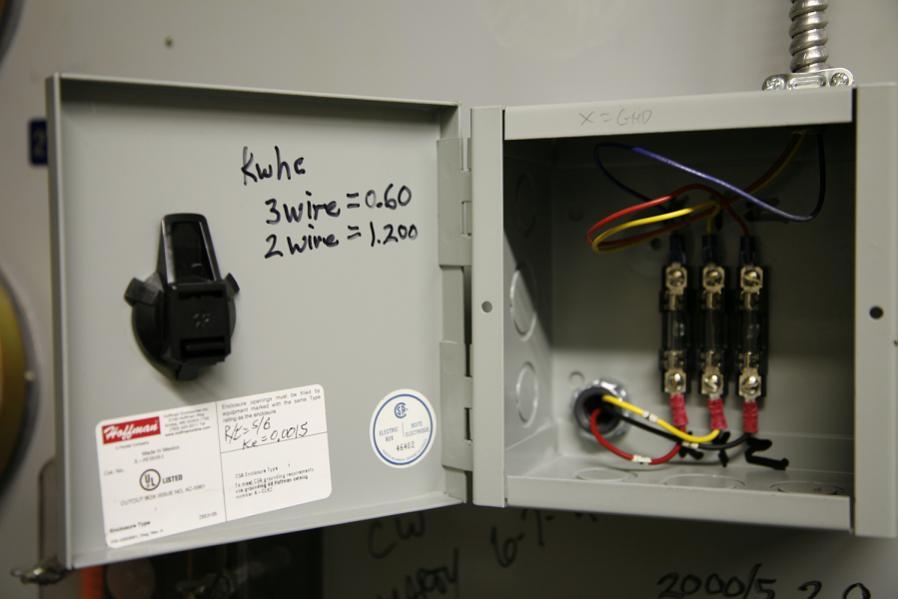A few people have asked the following question.
“When offered the choice between KY or KYZ pulses, which should they chose to wire into their OptoEMU Sensor”?
Before we answer that question, let’s back up a bit and explain what we are talking about.
Back in the day, when utility meters had spinning disks in them, a method was devised where a relay contact was provided for customers to be able to monitor how much energy they were using. Usually it was a form C switch or relay–that is, one contact was normally closed and the other normally open. Thus, for half the disk rotation, the switch ‘K and Z’ were closed and for the other half rotation, the switch ‘K and Y’ were closed.
In some cases, a form A switch was provided. It was closed for one rotation and open for the next.
Fast forward to the new solid state ‘smart meters’ and we still have access to the dry contacts, often as an option (at an extra cost to the user).
Here is an animated gif our illustrator here at Opto put together. (Remember to log in to see images.) This one’s the KY (Form A) version:

The action of the K and Y can be clearly seen and is very straight forward to understand. The switch closes for the amount of time that it takes for the customer to use x kWhs and the switch then opens for the same amount of time that it takes for the customer to use the next x kWhs.
Here is an animation of the KYZ (Form C) pulse in action:

Similar idea here. In practice, you end up with about a 50/50 duty cycle. I say about because it’s possible for the customer to turn on a large load at any time and thus shorten up one of the pulses (or turn something off and extend the duration of the pulse compared to the last one).
It’s worth noting that the utility generally tries to set up the meter (a lot easier nowadays with the programmable smart meters) such that the pulses arrive around once a second.
How do they do this? They look at the typical power use of the customer and then divide by 3600, thus giving them the value I mentioned above of x kWhs.
In the case of Opto, during the day, we get a pulse around every 0.7 of a second and overnight we can go around 8 seconds between pulses. What pulse value does that work out to be? Well, here is a picture of the pulse box that the utility installed for us:
You can clearly see where the installer wrote the values for each pulse.
Every time we here in the Opto 22 building use 1.2 kW hours, in the case of the KY output, we see a contact change (the switch opens or closes). In the case of the KYZ, we get a change in the contacts every 0.6 kW hour.
In our case we wired these terminals back to the OptoEMU Sensor as per page 7 of the EMU’s user guide, doc 1932 (pdf warning).
The EMU is a bit like our SNAP-IDC5-SW module; that is to say, the EMU supplies around 15 VDC at 7 mA for the pulse inputs. This voltage and current is a good balance between being able to drive a long length of wire (total round trip resistance of 500 ohms) and ensuring the long life of the relay contacts in the meter.
In other words, you don’t need any extra power supplies to wire up. Just hook the meter straight into the EMU, and the EMU does not have to be right next to the meter, it can be some distance away.
So, to answer the original question then, which is the best to use?
If you have KYZ, use them. Why? Because you get twice as many pulses than using KY. This is a nice increase in accuracy at just the cost of an extra length of wire.
One of the two cool things the EMU does for you is auto detect if you are using KY or KYZ, so there is no setup required for that. Just wire up whatever you have. Enter the “Quantity per pulse” into the appropriate page in the OptoEMU Manager and away you go.
The other cool thing the program running in the EMU does is that it times the pulses, and after a few seconds you can view the kW’s your installation is using. Remember, the pulses change after you use power over time, thus they show energy (remember the spinning disk, that’s the time factor). We do the math in reverse for you and display power, as most people think in power quicker and easier than energy.
e.g., I’m using 800 kilowatts right now, vs. we used 5.8 mWh yesterday.
As usual, we would love to hear about your experiences with KYZ pulses and all things Opto and energy.
Does your facility / building already have KY or KYZ pulses available?
Here is a video on the topic.
Pulse on!
Ben.

